

1.4 Create a good research question. Create a research question that incorporates each of the six principles.
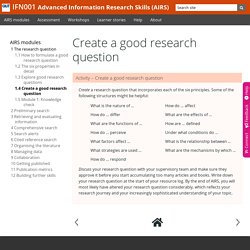
Sports, exercise and health science teacher support material. The internally assessed component of the course is divided into five sections.

Personal engagement Exploration Analysis Evaluation Communication Each section aims to assess a different aspect of the student’s research abilities. IB Solved: Grade 7 Notes, Tutoring and Assessments - All Things IB (Blog) While studying Sports, Exercise and Health Science (SEHS) can be a truly enriching and worthwhile experience that will without doubt help you progress into a career, it can be a very challenging and difficult subject.
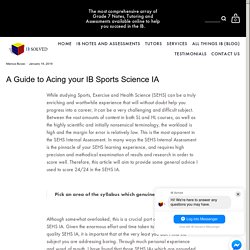
Between the vast amounts of content in both SL and HL courses, as well as the highly scientific and initially nonsensical terminology, the workload is high and the margin for error is relatively low. This is the most apparent in the SEHS Internal Assessment. In many ways the SEHS Internal Assessment is the pinnacle of your SEHS learning experience, and requires high precision and methodical examination of results and research in order to score well. Therefore, this article will aim to provide some general advice I used to score 24/24 in the SEHS IA. Pick an area of the syllabus which genuinely interested you Although somewhat overlooked, this is a crucial part of succeeding in you SEHS IA.
Before delving into research set a solid plan for your experimental design. Guide to the Sports Science IA - IA Creator. About the Author I have taught International Baccalaureate Sciences for over 20 years in several IB schools across the globe and have worked with hundreds of students.
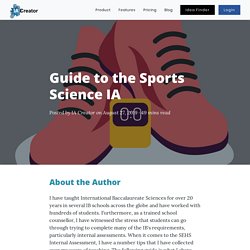
Furthermore, as a trained school counsellor, I have witnessed the stress that students can go through trying to complete many of the IB's requirements, particularly internal assessments. When it comes to the SEHS Internal Assessment, I have a number tips that I have collected over my years of teaching. How much data is sufficient? Sportscience. Writing the Background to your IA using Research. Literature Review. How to Add and Change Gridlines in your Excel 2013 Chart. Introduction - Handbook of Biological Statistics. Fitness Test List. Home > Fitness Testing > Tests > List Here is the complete listing of all fitness tests in the Topend Sports database, listed in alphabetical order with also the top 10 most popular tests for your convenience.
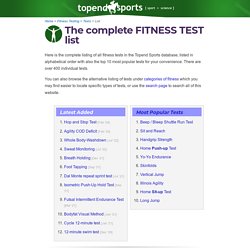
There are nearly 400 individual tests. You can also browse the alternative listing of tests under categories of fitness which you may find easier to locate specific types of tests, or use the search page to search all of this website. Performance Testing. Sport Performance & Science Reports. – Physical Phone Experiments. YLMSportScience (Blog) General Lab sites. Introducing Vernier LabQuest 2. LabQuest® 2 Software. Graphical Analysis™ 4 App. Exercise Heart Rate Monitor. Vernier Go Wireless® Heart Rate with iPad® - Tech Tips with Vernier. EKG Sensor. Monitor EKG and EMG Using Go Direct® EKG — Tech Tips. The 3 Minute Aerobic Test – Wattbike Australia.
The 3 minute test assumes a high level of basic fitness and low risk category of cardio vascular events.
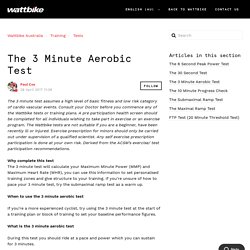
Consult your Doctor before you commence any of the Wattbike tests or training plans. A pre participation health screen should be completed for all individuals wishing to take part in exercise or an exercise program. The Wattbike tests are not suitable if you are a beginner, have been recently ill or injured. Exercise prescription for minors should only be carried out under supervision of a qualified scientist. Any self exercise prescription participation is done at your own risk. Why complete this test. Wattbike : How To Complete The Three Minute Test.
Team Sport Athletes May Be Less Likely To Suffer Anxiety or. As the prevalence of mental health issues continues to increase globally, more studies have focused on physical activity as a potential protective mediator for mental health disorders including anxiety and depression (Boone and Leadbeater, ; Schaal et al., ).
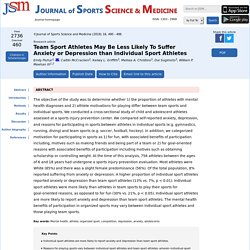
Having extensively examined how exercise improves physical health, researchers are now focusing on the psychological impacts of physical activity (Eime et al., ; Nixdorf et al., ). Are Landing Biomechanics Altered in Elite Athletes with Chro. The ankle, one of the most important lower extremity joints helps maintain center of mass (COM) and body posture stability (Lee and Lin, ).
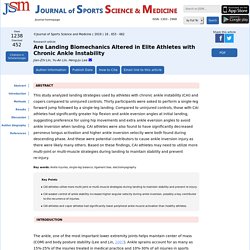
Ankle sprains account for as many as 15%-25% of the injuries treated in medical practice and 10%-30% of all injuries in sports (Lötscher and Hintermann, ). In a systematic large-scale review, Fong et al showed 49.3% of ankle sprains were caused by participation in sports, with basketball (41.1%), football (9.3%), and soccer (7.9%) accounting for over half of all ankle sprains sustained during athletic activity (Fong et al., ; McCriskin et al., ; Waterman et al., ). About half of all athletes who sprain their ankles do not seek medical assistance after the incident, and this may have a profound adverse impact on their future in sports (McKay et al., 2001).
The effects of CAI on these elite athletes and how they land following repeated ankle sprains has not been discussed in detail. Participants. The Effects of Cold Water Immersion after Rugby Training on. Despite the popularity of cold water immersion (CWI) as a recovery modality, little research has been conducted in this area.

CWI therapy for acute injuries has been used to explain the purported physiologic effects on post-exercise recovery. However, positive effect of CWI on the recovery of muscle strength and power or on muscle damage after severe muscle activity has not been demonstrated clearly. Exploring Children’s Physical Activity Behaviours According to Location: A Mixed-Methods Case Study. 1.
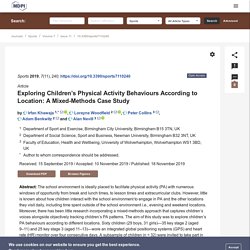
Journal of Science and Medicine in Sport Open Access Articles. The latest Open Access articles published in Journal of Science and Medicine in Sport. Ciara M. O’Donovan | Sharon M. Madigan | Isabel Garcia-Perez | Alan Rankin | Orla O’ Sullivan | Paul D. Cotter Vandana Sundaram | Victoria Y. Chih-Han Wu | Costas I. Sandra C. Nirmala K.P. Live-high train-low improves repeated time-trial and Yo-Yo IR2 performance in sub-elite team-sport athletes. 1. Introduction Australian Football (AF) athletes cover high distances,1 often at high-velocities (>4.17 m s−1),2 suggesting that a high physical capacity is important for these athletes. Despite this, higher aerobic capacity may not translate into improved match running,2, 3, 4 with physical capacity not always related to match running performance.3 However, better performing teams and individuals cover more distance in matches,2, 5 and have superior time trial (TT)4 and Yo-Yo intermittent recovery test level 2 (Yo-Yo IR2) performance.6, 7 The resynthesis of phosphocreatine (PCr) is oxygen-dependent,8 with the rate of muscle re-oxygenation after a maximal effort critical for subsequent performance.9 Therefore, a highly developed aerobic system is crucial for performing both the lower-intensity movements and repeated high-intensity activities during matches.
As increased fatigue reduces technical skill performance,10 minimizing fatigue may help maintain skill efficiency. Isokinetic resistance training combined with eccentric overload improves athletic performance and induces muscle hypertrophy in young ice hockey players. Practical implications Slow isokinetic resistance training combined with eccentric overload is an effective strategy to increase muscle mass in young ice hockey players.
Ice hockey players could apply isokinetic resistance training and eccentric overload to their weekly regimen to improve drop jump performance. To improve maximal strength and power output in the jump squats, both traditional resistance training and isokinetic training combined with eccentric overload are beneficial. 1. Introduction Resistance training (RT) is widely practiced by individuals pursuing health benefits or improved athletic performance. Given the above discussion, the literature indicates that isokinetic training and eccentric overload independently induces favorable muscular adaptations, however, data regarding the combined effects of these training modalities is scarce.
Effects of breaking up sitting on adolescents’ postprandial glucose after consuming meals varying in energy: a cross-over randomised trial. 1. Introduction Chronic health conditions thought to develop during late adulthood, such as metabolic syndrome and type 2 diabetes, are now occurring at a younger age than in previous decades.1 Some studies in youth,2 but not all,3 suggest that engaging in high volumes of sedentary time is associated with increased fasting blood glucose levels and insulin resistance which are key risk factors for developing these conditions. Thus, targeting reductions in sedentary time has the potential to improve an adolescent’s metabolic profile and reduce their risk of developing metabolic syndrome or type 2 diabetes.
JHSE 14 4 15. JHSE 14 4 02. JHSE Roychowdhury. Jhse Vol 11 N 2 297 310. Jhse Vol 12 N 3 698 709. JHSE 13 3 13. JHSE 15 1 InPress 13.